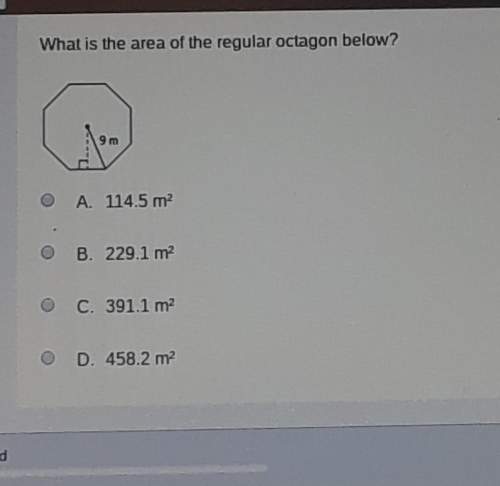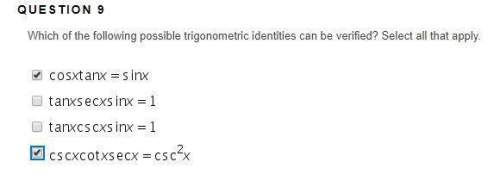
Mathematics, 05.09.2020 01:01 faithbar0911p5p68a
Project Option 1 Instructions Scientific notation is a tool that is used frequently in science, including astronomy, chemistry, biology, and more. In this activity, imagine that you are a student intern at NASA and are researching information about travel within our solar system. You will complete a series of tasks using what you know about scientific notation and what you discover about our solar system to calculate distances that astronauts may use for their next trip to space. Part 1 Using technology or other resources, research the average distance that each planet is from the sun (in kilometers). Once you have found the distance, create a chart showing each planet's distance from the sun. The sun itself will not receive a label since it is your starting point. For example, Mercury is located an average of 57,909,000 km from the sun, so on the chart, Mercury would be labeled with a distance of 57,909,000. Use the example of the chart below to help you get started: Planet Distance from sun (in km) Distance in scientific notation Mercury 57,909,000 Part 2 Convert each of the distances that you have recorded into scientific notation. List these on your chart for this assignment. Part 3 Answer the following questions using the data you have found. Show your work on all questions as indicated. If a spacecraft was parked on Venus and needed to make a flight to Jupiter, how far would it need to travel? (Assume both planets are aligned with the sun and are on the same side of the sun.) Show your work and provide your answer in scientific notation. Mercury, Venus, and Earth are the three planets closest to the sun. Would their combined distance from the sun be greater or less than the distance from the sun to Neptune? Show your work and justify your answer. If Earth was 10 times farther away from the sun than it is now, which planet would it be closest to? (Assume all the planets are aligned with the sun and are on the same side of the sun.) Compare Earth's new distance to that planet. How far apart would they be in standard notation? How far apart in scientific notation? Show your work. The space shuttle travels at about 28,000 km per hour. Using that information, estimate how many hours it will take the shuttle to reach Saturn from Earth. (Assume both planets are aligned with the sun and are on the same side of the sun.) Show your work. Convert your answer into scientific notation if necessary. What to Submit Name the assignment 01_07_Operations_with_Scientific_No tation_YourName. In the Assessments area, submit your work to 01.07 Operations with Scientific Notation. Rubric Look over the grading rubric to see how you will be evaluated. Excellent! Almost There! Not Quite Yet! Keep Trying! Part 1 Chart 5 points All work is submitted, and all calculations are correct. 4 points Most work is submitted, and most of the calculations are correct. 3-2 points Some work is submitted, and some of the calculations are correct. 1-0 points Little or no work is shown, and few or none of the calculations are correct. Part 2 Conversions 10 points All work is submitted, and all calculations are correct. 9-7 points Most work is submitted, and most of the calculations are correct. 6-4 points Some work is submitted, and some of the calculations are correct. 3-0 points Little or no work is shown, and few or none of the calculations are correct. Part 3 Questions 15 points All questions are answered, and all had well-thought-out, descriptive, and knowledgeable responses. 14-10 points Most questions are answered, and most had a well-thought-out, descriptive, and knowledgeable response. 9-4 points Some questions are answered and had well-thought-out, descriptive, and knowledgeable responses. 3-0 points One question is answered and may or may not have had a well-thought-out, descriptive, and knowledgeable response.

Answers: 1


Another question on Mathematics

Mathematics, 21.06.2019 13:00
Acircle has the equation (x-2)^2 +y^2 =5. what are the coordinates of the circle's center?
Answers: 1

Mathematics, 21.06.2019 18:30
Two cyclists 84 miles apart start riding toward each other at the same. one cycles 2 times as fast as the other. if they meet 4 hours later, what is the speed (in mi/h) of the faster cyclist?
Answers: 1


Mathematics, 22.06.2019 00:30
If a revenue in total for a month was $9,950, fixed expenses were $9,000, and variable expenses were $300 what would be the total profit/ loss for the month?
Answers: 3
You know the right answer?
Project Option 1 Instructions Scientific notation is a tool that is used frequently in science, incl...
Questions






Social Studies, 08.07.2019 02:50


Biology, 08.07.2019 02:50


Biology, 08.07.2019 02:50


Mathematics, 08.07.2019 02:50

English, 08.07.2019 02:50

Biology, 08.07.2019 02:50





Mathematics, 08.07.2019 02:50





